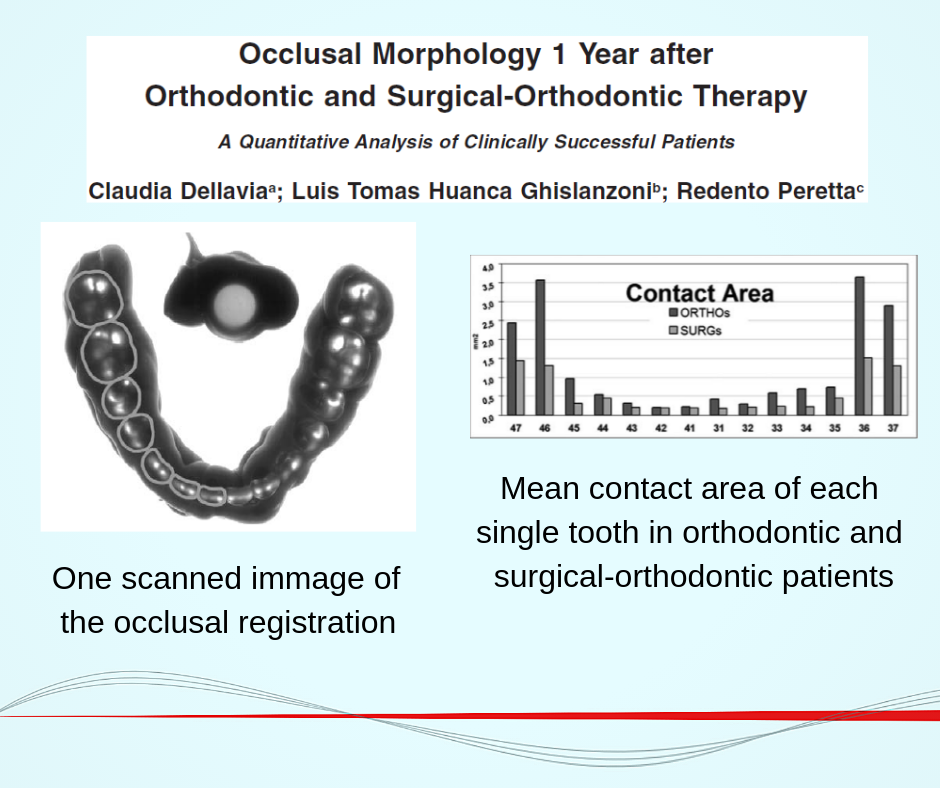Occlusal Morphology 1 Year after Orthodontic and Surgical-Orthodontic Therapy / A Quantitative Analysis of Clinically Successful Patients
Title:
Morphology of the occlusion after a year from orthodontic and surgical-orthodontic therapy
Quantitative analysis on patients with a positive clinical response
Target:
The study evaluated the morphological characteristics of the occlusion in patients with a positive clinical response following orthodontic treatment or orthodontic surgery. In particular, points, areas and frequency of occlusal contact were evaluated after a year of passive retention.
Materials and methods:
Two groups of patients were analyzed: twenty-two orthodontics and eighteen surgical-orthodontics.
All patients were treated with edgewise technique by the same orthodontist.
Points and contact areas were evaluated using a new digital image analysis method considering the occlusal impression. The polyvinylsiloxane impressions, after being detected, were scanned and transformed into grayscale images.
The physical relationship of light absorbance, between the polyvinylsiloxane and a known thickness, has served to determine the contact areas (less than 50 μm in thickness) and those in close contact (less than 350 μm in thickness).
Results:
The contact area was significantly larger in orthodontic patients than in orthodontic surgery cases (Student's t-test, P.05). The surgical-orthodontic group had significantly fewer contact points than the orthodontic group only at 150 μm of thickness.
In both groups of patients the first molar had the largest contact surface and that the occlusal support was mainly distributed in the posterior regions with predominance of the first molar.
Conclusion:
Surgical-orthodontic patients appear to have smaller contact surfaces and fewer contact points than orthodontic patients do. However, there are no differences in the number of teeth in contact with the opposing teeth.
Practical tip:
The contact symmetry of the first molars is probably a key factor in the post-orthodontic normalization of the contact points.

